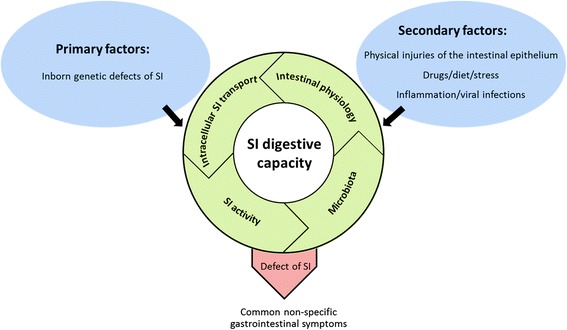Fig. 1.

Multifactorial causes of primary or secondary sucrase-isomaltase deficiencies. The SI function in cleaving carbohydrates depends on the correct transport of the enzymatically competent protein to the BBM. This process occurs via association of SI with lipid rafts in the trans-Golgi network vesicles that are transported to the BBM along the actin cytoskeleton. The digestive capacity of SI can be affected by primary genetic mutations that target the SI gene. On the other hand, environmental factors can also influence expression and function of SI. The induced or secondary effects on the SI function can be elicited by altered epithelial cell integrity or the cytoskeletal organization of the enterocytes as well as changes in the healthy protective microflora. In some cases, the structure and function of SI can be directly influenced by certain therapeutics or dietary components. Together, alterations in the intestinal physiology triggered for example by inflammation can exert adverse effects on the trafficking and function of SI. The maldigested carbohydrates will in turn moderate the gut microbiota differently from healthy conditions and may render subsequent negative influences on the intestinal physiology
